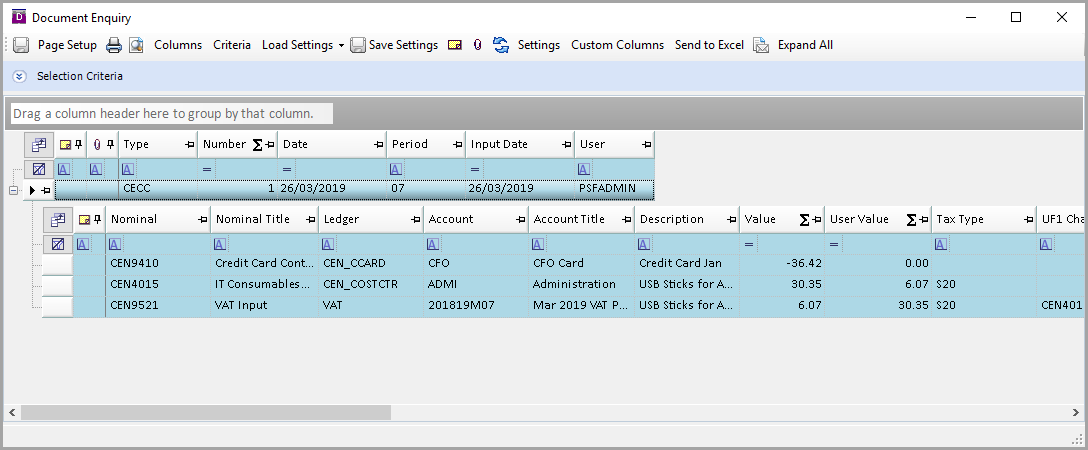Useful terminology IRIS Financials
Purpose of this article
To understand how the software works, it is useful to understand some basic accounting terminology and how it relates to the software.
PS Financials structure
In general finance, a modular structure with three standard ledgers is normally used to record separate accounting information. The Sales ledger records transactions relating to money coming in, the Purchase ledger to money going out and the General ledger is used to record transactions relating to assets, liabilities, revenue, and expenses. In PS Financials any number of ledgers can be used.
Nominals
The chart of accounts is a complete list of financial codes (nominals) that provide a way of categorising income and expenses into logical groups.
When an academy/MAT spends or receives money, it needs to be classified, such as money spent on stationery, income from trips or bank interest, etc. These classifications are required for analysis purposes, so that you can see for example, how much each department has spent on stationery. Additionally, depending on what the money you have received or paid out was for, it will be treated differently for tax purposes and will be displayed differently in your academy/MAT accounts. A nominal is effectively a classification for what is being bought, sold or reported on.
When entering financial transactions into PS Financials, you can determine which nominal the transaction is allocated to. By categorising information in this way, it can then be utilised for both management and reporting purposes.
Nominals consist of a code and a title, e.g. 4020 - Stationery. They are grouped into numbered ranges based on related categories. For example, income nominals have codes within the 1000s, salaries within the 2000s, premises within the 3000s and so on.
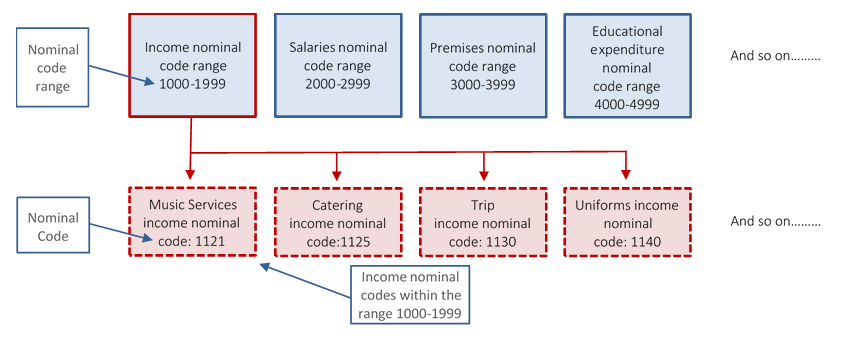
PS Financials has worked with users and the Education and Skills Funding Agency (ESFA) to develop a whole package of functionality and default data specifically for the education sector. This is referred to at the Education Standard. A Commercial Standard is available for organisations in the commercial sector.
For more information, refer to About Nominals in IRIS Financials .
Ledgers
A ledger is used to store a set of related unique records, referred to as accounts. For example, the Purchase ledger is used to store supplier accounts.
The information in some ledgers will be static, such as VAT ledgers which contain individual accounts for each VAT period. Other information will need to be regularly maintained, e.g. the supplier accounts stored in the Purchase ledger, or customer accounts stored in the Sales ledger.
There are several types of ledger available within the system. These determine what information is stored within the ledger and therefore what information is required when creating an account to be stored in that ledger. Each ledger can be likened to a drawer within a filing cabinet where each drawer contains all the information relating to that ledger.
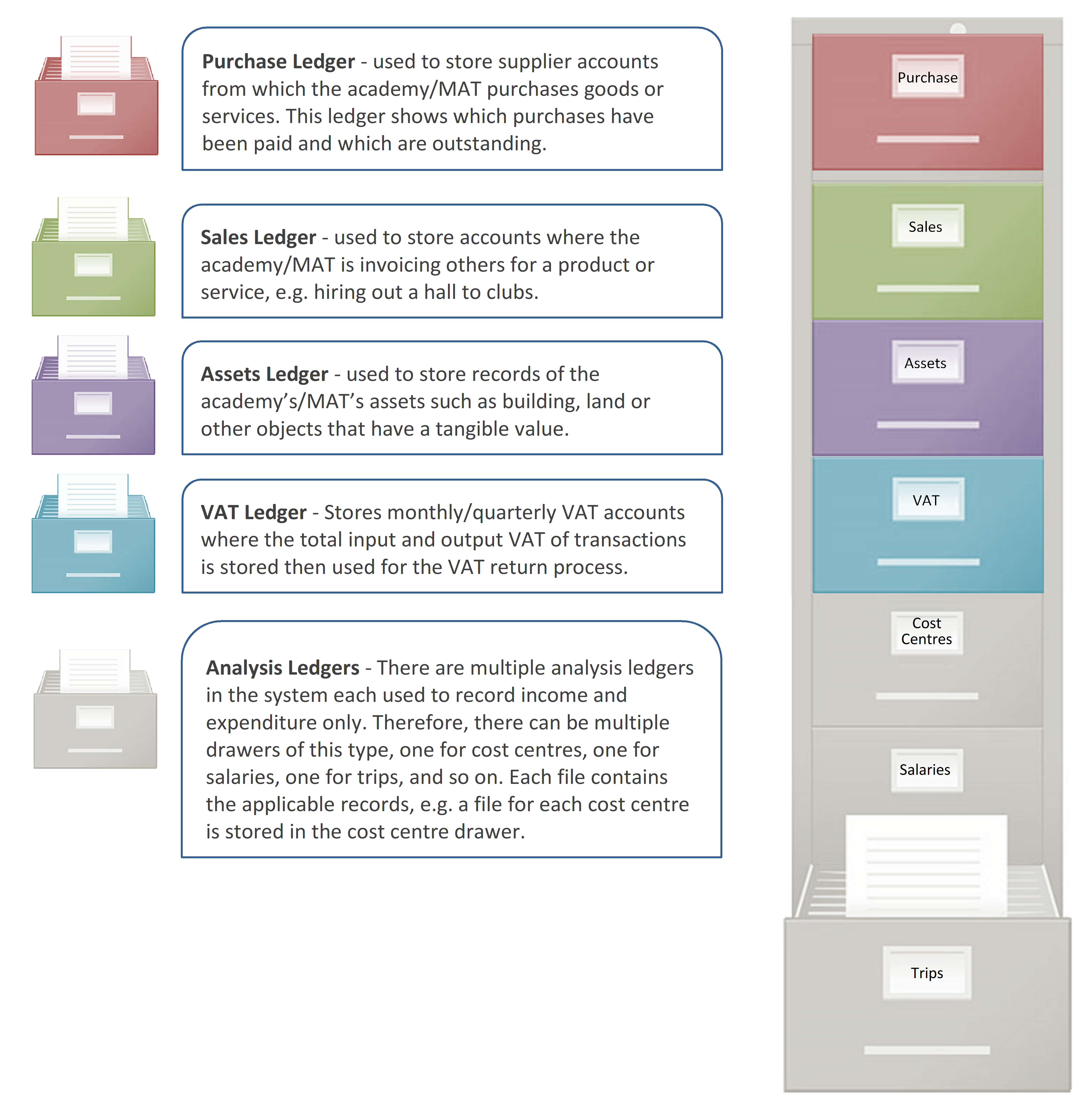
Nominals can be linked to only one ledger (although some nominals aren’t linked to ledgers at all). The linked ledger determines what accounts, cost centres, user fields, etc. the user will be able to select from when posting a transaction.
Ledgers however, can be linked to multiple nominals. For example, the Trips Ledger (which is an analysis ledger) is attached to several nominals. This is because several things can/need to be recorded that relate to trips.
The following diagram demonstrates how these elements fit together.
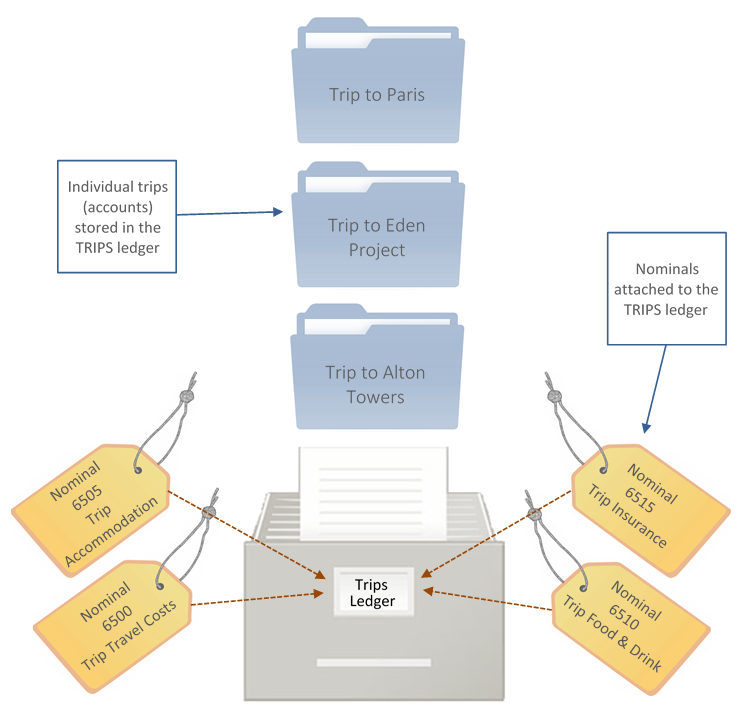
For more information, see About Ledger List for Education in IRIS Financials .
Locations
Within the system, locations identify the separate business units within the organisation (e.g. the separate academies within a MAT). Each academy will have their own location code. For a single academy, there is usually only one location (unless for example, a Sports Hall is hired out and run separately to the academy). For a Multi Academy Trust (MAT), each academy within the trust will be a separate location, together with an additional location for the Central MAT.
These are set up by PS Financials as part of the installation process. The locations are stored within the ACADEMY ledger as individual accounts. Each account will have a three-character code.
The following diagram demonstrates a typical MAT setup where each academy is added as a separate location account with a three-character location code.
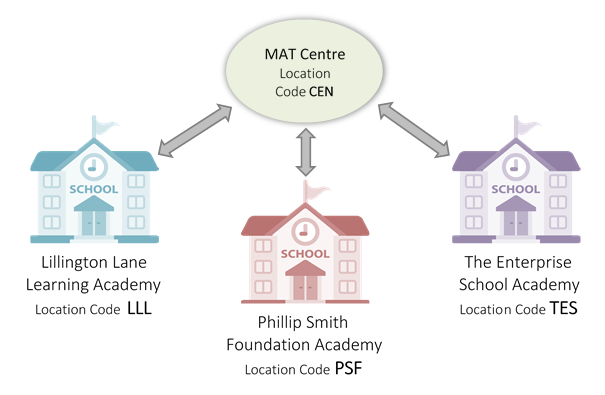
Using the locations codes, academy specific data can be created including nominals, ledgers, cost centres, etc. This enables a further level of accounting and reporting. The following diagram shows each academy has a nominal for recording trip income:
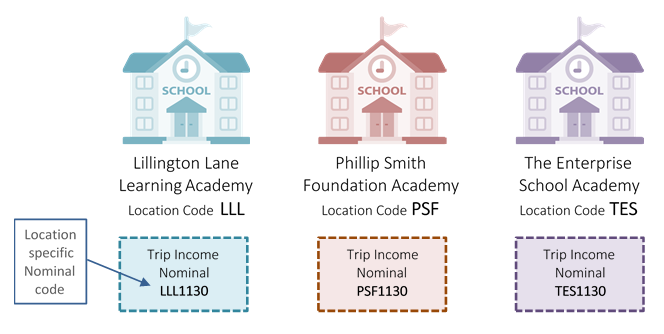
Location specific ledgers are easily identified because they are preceded with the three-character location code. For example, Lillington Lane Learning academy’s salary ledger would be called LLL_SALARY. Ledgers available to all locations are not preceded with the location code, e.g. the PURCHASE-Purchase Accounts ledger. Location specific nominals can be identified in the same way.
For MATs with multiple academies, specific ledgers will usually have been created for each academy’s bank accounts, capital, cost centres, credit cards, salaries, trips, etc. – all preceded with their three-character location code.

Document Types
Document Types are used to group a selection of document input forms (used to enter data in the system). They include sales invoices, purchase invoices, cheques, petty cash receipts, etc. Each document type provides access to one or more document input forms.
Document types are named with two characters identifying the type and (if applicable) two characters for the location. For example, a Non-Order Purchase Invoice for location LLL will be LLPI.
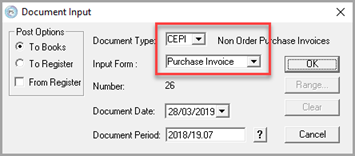
They can be used both when entering data and also as search criteria within enquiry screens.
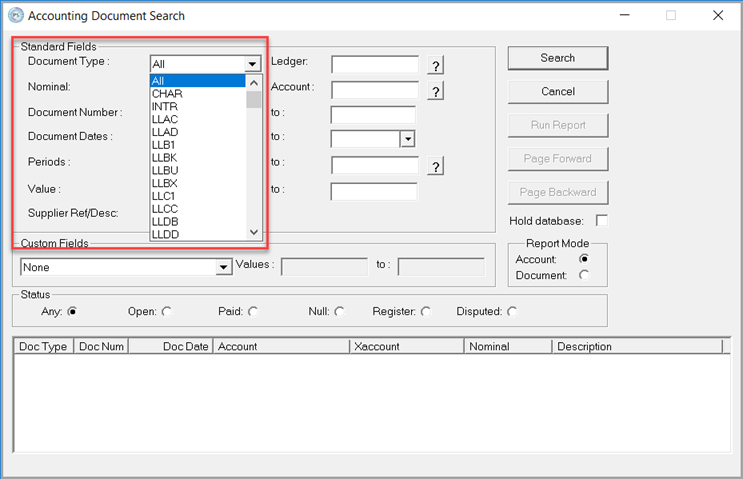
Document Input Forms
Document Input forms are used to input data into the system. An input form is attached to a document type. Some document types have one input form whilst others have more than one. For example, the Trips Receipt document type has two input forms one for recording petty cash and one for recording a non-cash payment.
When entering data, you will need to select the required document type which then limits the input forms available. This ensures that the correct input forms are available for the required purpose.
There are two types of form available:
- Summary input form – usually used for bank and payment documents and contain a small number of fields such as those shown in the following graphic:
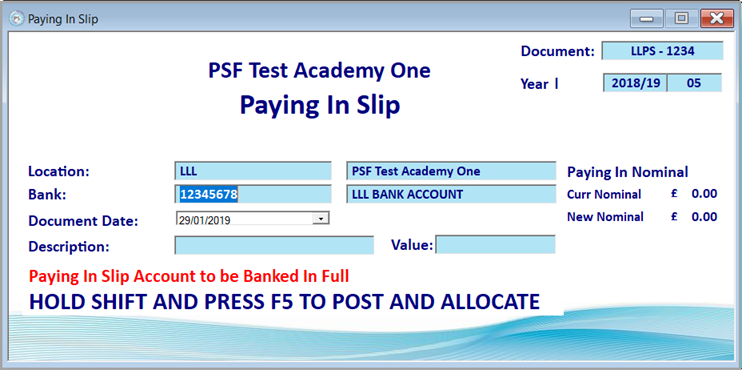
- Detailed input form – usually used for invoices and more complex financial transactions. They contain an additional section with columns and rows enabling multiple nominals and ledgers to be entered on the same form as shown in the following graphic:

Documents
Documents are the 'transaction records' resulting from the completion of a document input form. The data contained within the document can be viewed by carrying out a document enquiry.
